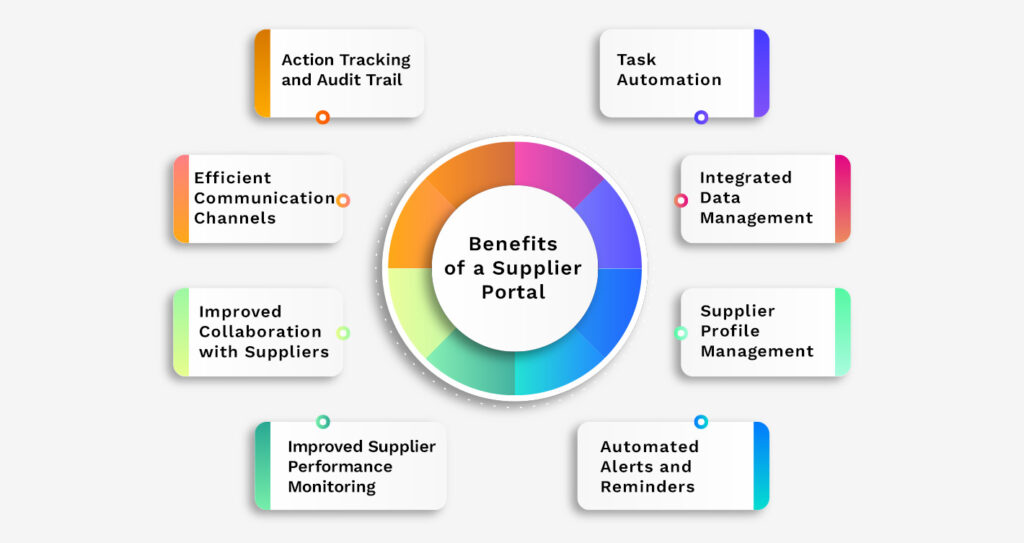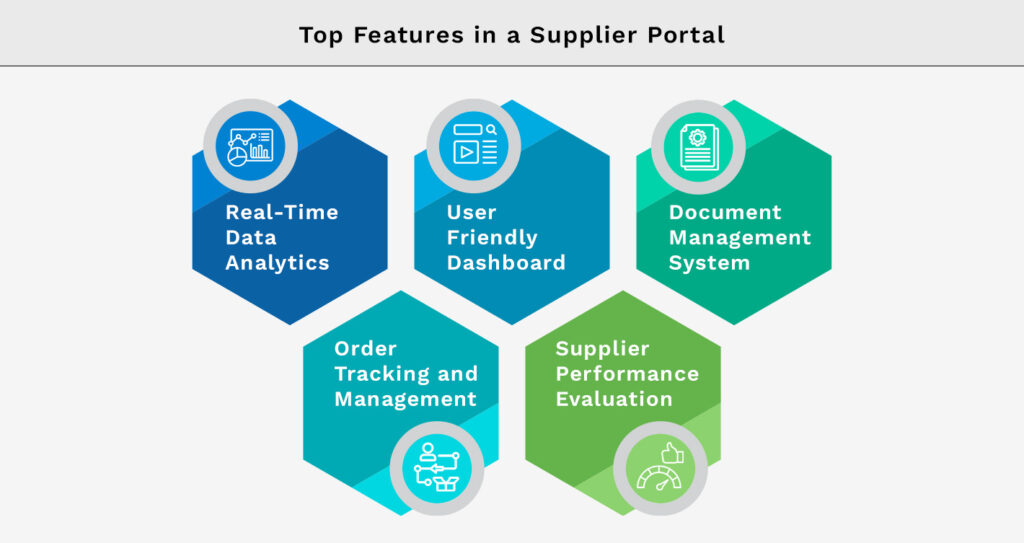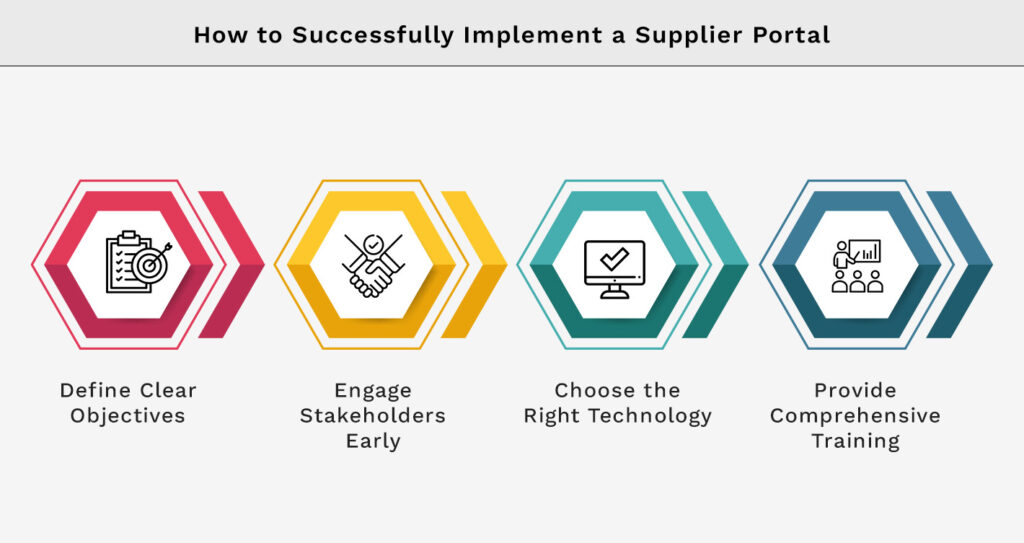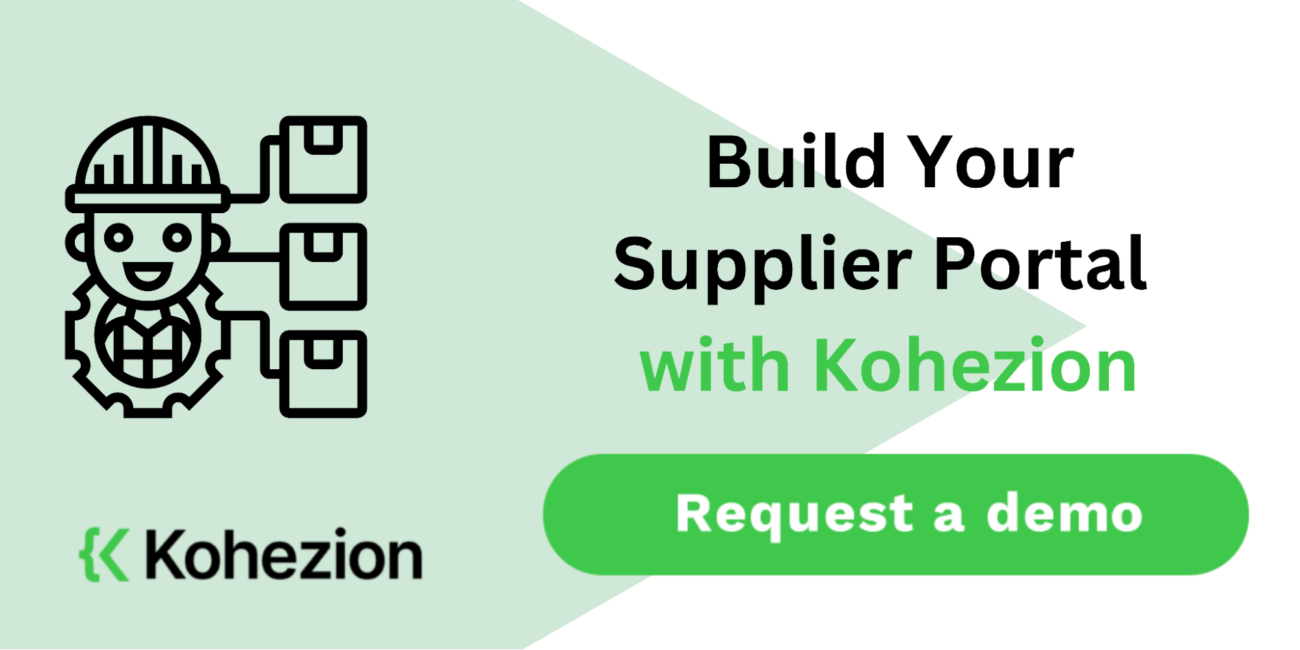Statistics show that only 50% of companies recognized as "best-in-class" use a supplier portal. However, using a unified Supplier Portal helps increase your business's profitability. A Supplier Portal connects you with suppliers, making buying easier and communication better.
Switching to a Supplier Portal allows your team to focus on important tasks. It gives you real-time data and helps solve problems quickly, leading to better work, fewer manual tasks, and better teamwork.
What is a Supplier Portal
A Supplier Portal, also known as a vendor portal, is an online tool for businesses and suppliers. It makes it easy to share information. You can add supplier details, upload documents, and check updates anytime.
It's hosted as Software as a Service (SaaS) by eCommerce providers, which connects it to your ERP system. This ensures data is accurate and fast, reducing errors.
Its main goal is to save time by automating tasks. Suppliers can manage their accounts online, reducing phone calls and emails. It also offers notifications and logs for tracking Purchase Orders (POs).
Why is a Supplier Portal Important
Supplier portals make managing suppliers easier and faster. This means getting suppliers on board quicker and getting better data for bidding or finding new suppliers.
These portals also help with diversity programs. They make finding and working with diverse suppliers easier, improving team collaboration and strengthening the supply chain.
Using a supplier portal makes communication and tracking easier. It reduces manual work, such as updating contact info and checking certifications, letting you and your team focus on bigger goals.
With a portal, you can access supplier data in real time, which helps you make quick, smart decisions. Suppliers also get personalized information, which makes them more productive. All these benefits make managing suppliers better and more efficient.
Benefits of a Supplier Portal
A supplier portal brings many advantages. It makes things more efficient and strengthens relationships with suppliers. It uses advanced technology to improve your procurement processes. This leads to better operations and accurate data management.
Task Automation
Task automation is a big plus. It automates tasks like invoice handling and data entry, making your operations smoother and reducing errors. You can then focus on important tasks instead of routine ones.
Integrated Data Management
Integrated data management allows suppliers and buyers to see the latest data together. This ensures everyone has the right information, which is crucial for good supplier relationships.
Supplier Profile Management
Supplier profile management makes things more efficient. Suppliers can update their profiles themselves, saving time and keeping information current.
Automated Alerts and Reminders
Automated alerts and reminders increase efficiency. The portal sends out important notifications on time. This helps in making quick decisions and taking action.
Action Tracking and Audit Trail
Action tracking and audit trail features are very useful. They provide clear records of interactions and changes, making solving problems easier and building trust.
Efficient Communication Channels
Efficient communication channels reduce delays and misunderstandings. The portal's messaging system lets you exchange information quickly. This ensures that everyone gets the latest updates right away.
Improved Collaboration with Suppliers
Centralized communication makes working with suppliers better. It makes it easier to share information and make decisions together. This strengthens partnerships and improves collaboration.
Improved Supplier Performance Monitoring
Finally, monitoring supplier performance is easier. You can track and evaluate suppliers more effectively. This helps you make better sourcing decisions and improve your procurement strategies.

Top Features in a Supplier Portal
A supplier portal improves communication and workflow between businesses and their suppliers. Its key features help with tasks like managing orders and analyzing data.
Real-Time Data Analytics
Real-time data analytics give you quick access to important metrics, allowing you to make fast, informed decisions. You can adjust your plans quickly, improving your performance and response time. Using data analytics in your portal helps you make better forecasts and plans.
User-Friendly Dashboard
A user-friendly dashboard ensures your team and suppliers can use the portal easily. This makes managing orders faster and keeps your supplier relationships strong.
Document Management System
A system that keeps all documents in order makes them easy to find. This makes managing contracts easier, increases productivity, and keeps things in line.
Order Tracking and Management
Order tracking and management make it easy to monitor purchase orders. You can see their status in real-time, improving visibility and accountability and reducing errors and confusion.
Supplier Performance Evaluation
Checking how suppliers are doing helps you keep standards high. The portal's metrics help you see how well suppliers deliver, the quality of what they provide, and if they follow the rules. This info lets you improve your buying strategies and build stronger supplier relationships.

How to Successfully Implement a Supplier Portal
Setting up a Supplier Portal needs careful planning for success and user happiness. Your strategy should have clear goals and focus on keeping users involved. Here are the main steps for a smooth setup:
Define Clear Objectives
Set clear goals for your supplier portal. These goals should meet the needs of your company and suppliers. Solid objectives help guide the development and ensure the portal works as planned.
Engage Stakeholders Early
Getting people involved from the start helps everyone feel part of the project. It makes the transition smoother. Early involvement means everyone knows the portal's benefits and works together to meet goals. Good communication sets the standards and expectations.
Choose the Right Technology
Choosing the right technology is key to a good implementation plan. Look at different portal solutions to find one that fits your current systems. Choose technology that's flexible and can grow with your business. It should also have features to manage data quality well.
Provide Comprehensive Training
Good training is vital for using the supplier portal well. Offer training and resources to help suppliers use the portal's features confidently. This way, suppliers can help themselves, which reduces your team's workload. It also improves how suppliers are engaged.

Set Your Suppliers Up for Success with Kohezion
Using the Kohezion can improve your supplier relationships. It makes things more efficient and easier to manage. This tool lets you onboard vendors and communicate with them in real time.
It also has customizable features. This means you can make it fit your specific needs.
Kohezion helps you manage your workflow better, leading to more teamwork and better results for everyone.
Automation in the Kohezion Portal reduces mistakes and saves time. People using this software often see big savings, up to 40%. It also helps you better track things like compliance and onboarding. This makes getting good deals and finding ways to save money easier.
With Kohezion, you get insights in real-time. This helps you make smart choices. You can keep an eye on how suppliers are doing and make sure they deliver on time.
Conclusion
A supplier portal smooths interactions between businesses and suppliers, leading to more efficiency and clear communication. These portals automate tasks and keep all data in one place, cutting down on mistakes and building stronger ties with suppliers.
The move to digital solutions is changing the game for supplier portals. They now offer real-time checks on vendor performance and compliance, helping businesses manage risks and cut costs. As supplier portals become a big part of procurement strategies, they will modernize supply chain management, which is a big step forward.
Investing in a supplier portal is a smart move for your business. It helps you stay up-to-date with trends and get more value from your supplier partnerships.
If you have any questions or want to learn more about how a supplier portal can improve your procurement practices, feel free to contact us at Kohezion. We're here to help you make the most of your supplier partnerships!
Start building with a free account
Frequently Asked Questions
Access to a supplier portal is typically granted to company employees and suppliers involved in the supply chain. Different access levels can be assigned depending on the organization’s settings, allowing users to view or edit specific information. This ensures that sensitive data is only available to authorized personnel.
Yes, a supplier portal can assist with compliance by maintaining a record of all transactions and communications. This documentation can be crucial for audits and regulatory requirements. The portal can also include features that help suppliers meet compliance standards, such as checklists and reminders.
A supplier portal can manage various data types, including order details, invoices, inventory levels, and supplier performance metrics. It allows users to access and update this information in real time. This capability ensures that all stakeholders can access the latest data, facilitating better decision-making.
Implementing a supplier portal can be cost-effective in the long run, as it reduces manual processes and improves efficiency. Automating tasks and streamlining communications allows companies to save time and resources. Although there may be initial setup costs, the potential for increased productivity and better supplier relationships often outweigh these expenses.

